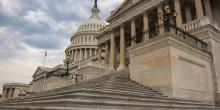Farmers in “Little Egypt” Look Forward to Growing Fiber Network
In a part of the Prairie State referred to as “Little Egypt,” a small county in southeastern Illinois recently received a big infusion of federal funds to expand its broadband network into neighboring rural counties.
In October of 2020, the USDA announced that the Hamilton County Telephone Cooperative was awarded a $20 million ReConnect grant and a $20 million ReConnect loan to bring broadband to over 19,000 residents, 462 businesses, 347 farms, 16 educational facilities, three post offices and four fire stations in Saline, Williamson, Franklin and White counties.
The $40 million in total Hamilton County received was a portion of the $600 million Congress appropriated to the USDA in 2018 to expand broadband infrastructure and services in rural America. In April of 2020, the USDA announced it had received 172 applications worth $1.57 billion in Round Two ReConnect requests.
The funds awarded to Hamilton County in the fall came on top of the $3.4 million from the state-wide Connect Illinois program and ReConnect funds the co-op received in February of 2020 to build out its Fiber-To-The-Premises (FTTP) network to connect more than 600 homes in the rural county with a population just over 8,000 residents.
Decades of Service




